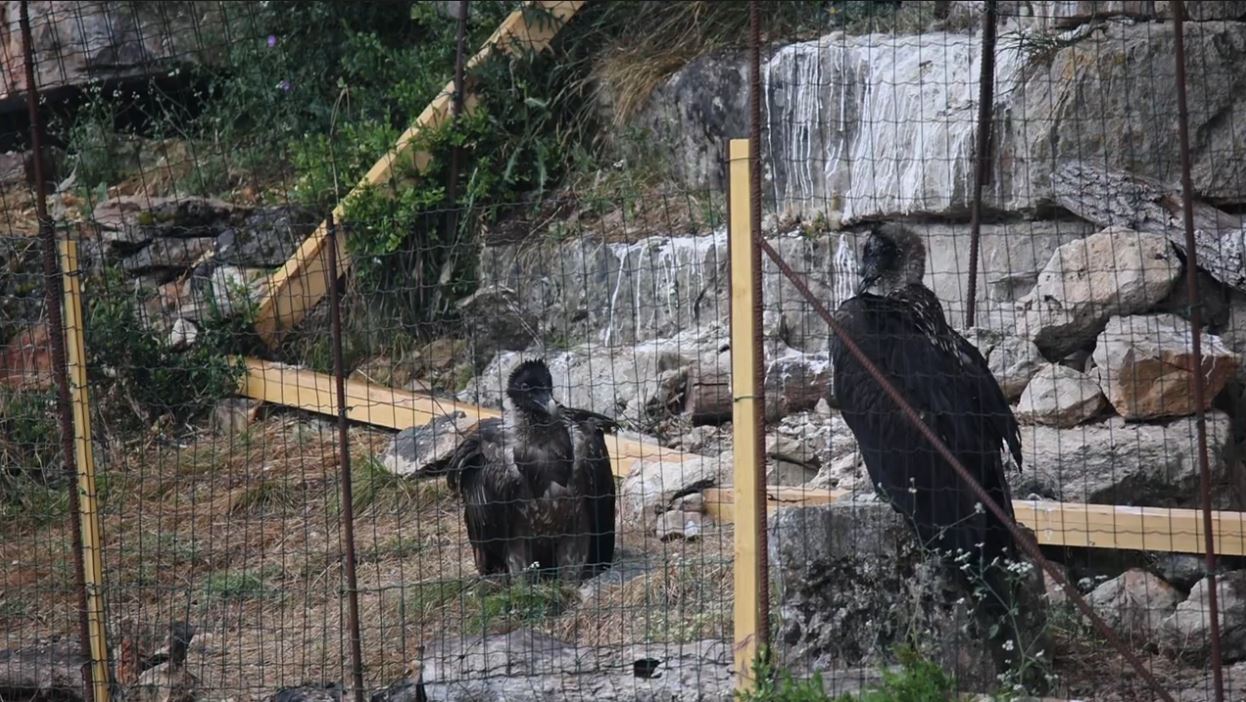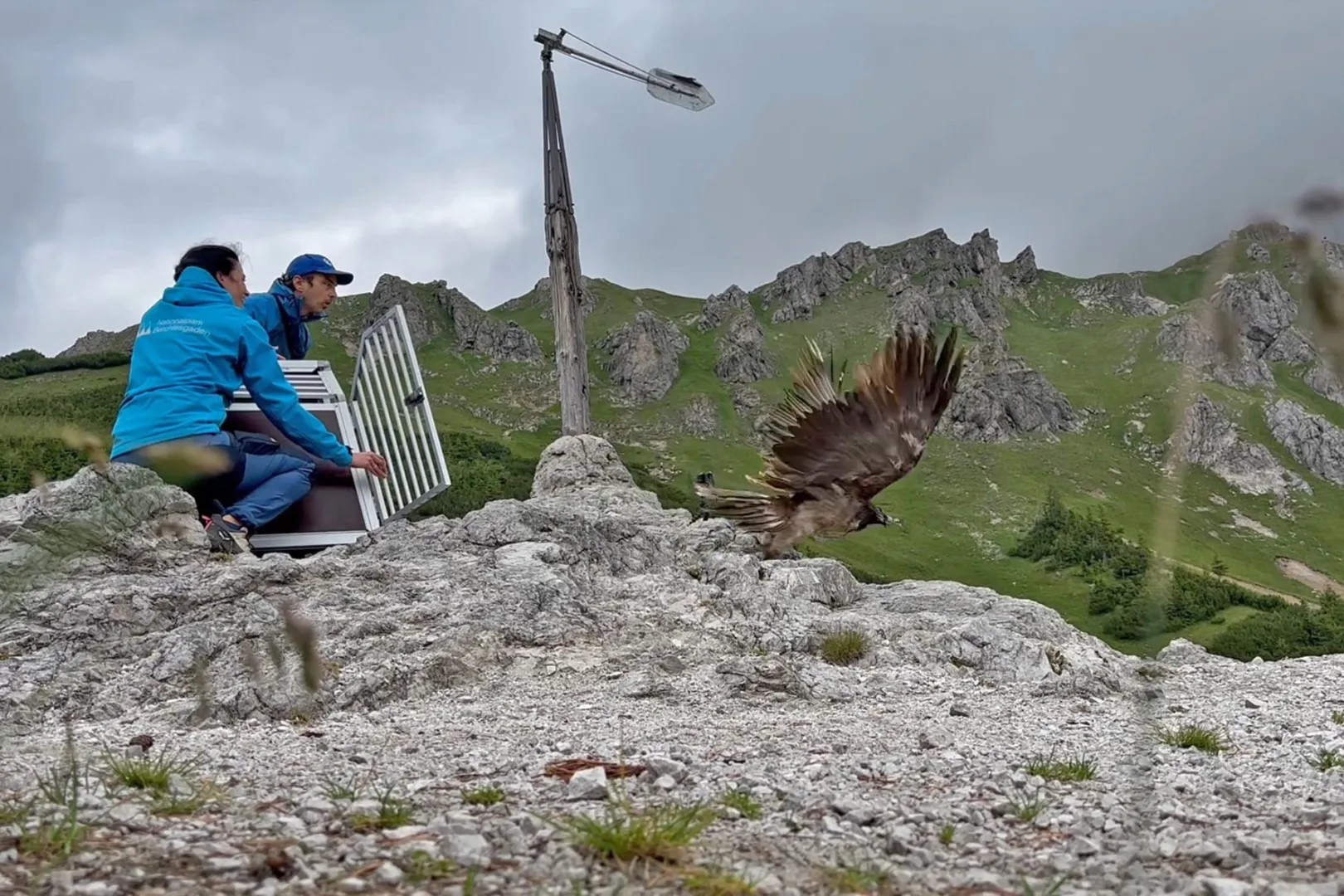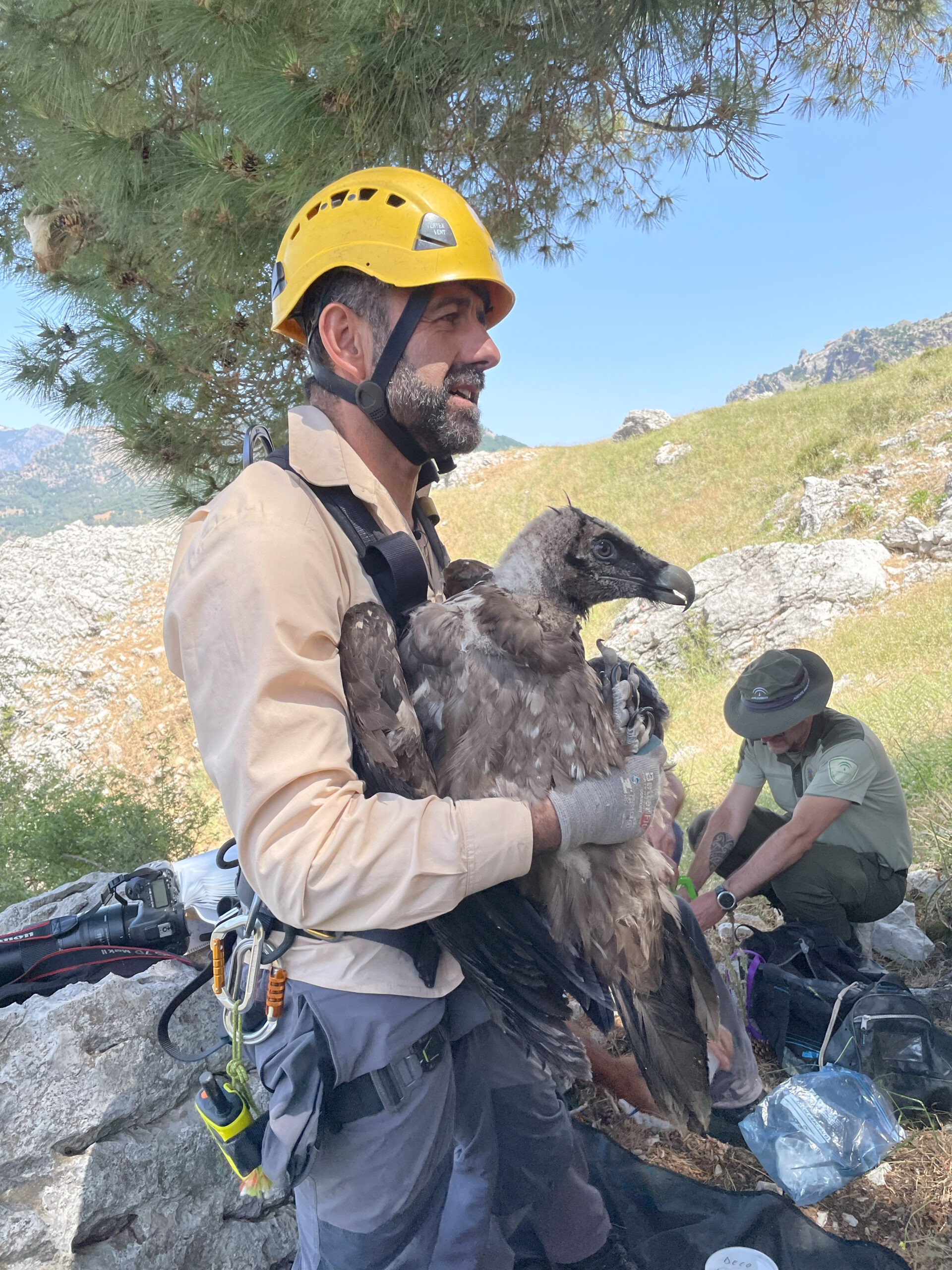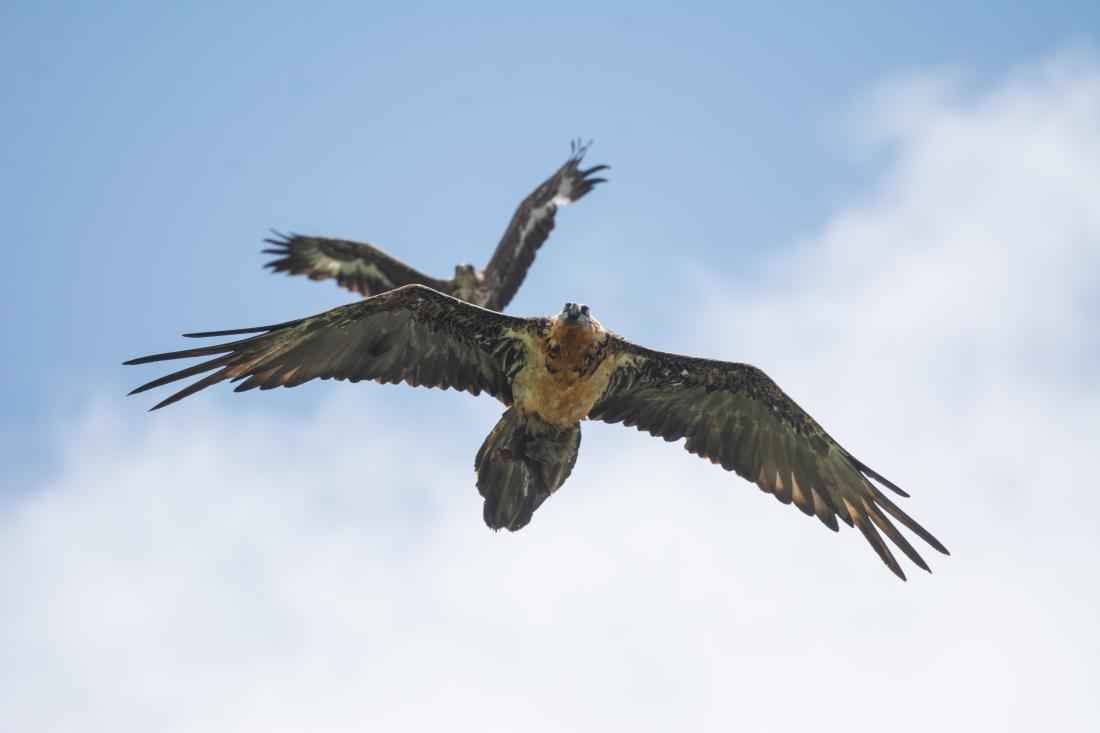
The Bearded Vulture Captive Breeding Centre of Guadalentín in Andalusia, Spain, welcomed their first Bearded Vulture chick of this breeding season! This chick now plays a significant part in the conservation efforts to restore the Bearded Vulture to its former range in Europe.
The story of the first Bearded Vulture chick
The Bearded Vulture pairs at Guadalentín have been busy since autumn with the 2020/21 breeding season, and now after months of preparation, the time has come for the hatching period!

On 24 January 2021, hatching was approaching with one of the eggs at the Centre, so human keepers removed it from its nest and transferred it to the laboratory to assist with the process if necessary. A few days later on 29 January, the chick hatched at 12:09 without needing any help, weighing 145,1 g. On this joyful occasion, the Centre’s staff decided to nickname the chick ‘Attenborough’ in honour of the legendary Sir David Frederick Attenborough.
The chick’s parents, Josef (male) and Keno (female), have been a pair since October 2014. Josef hatched on 8 March 1990 at Dresden Zoo in Germany and arrived at Guadalentín in October 1998. Keno hatched on 7 March 1999 at Wuppertal Zoo in Germany and was released into the wild in Rauris, Austria, as part of the Alpine reintroduction project. But, her life in the wild was short-lived. The project team had to recapture her soon after because she suffered serious attacks from an adult female resident in the area. She underwent a successful surgery that saved her life but still had to remain in captivity ever since. She arrived at Guadalentín in October 1999.
Although the father Josef helped produce several offspring, his behaviour with chicks is problematic, making it necessary to remove him from the aviary a couple of days before Keno adopts the first chick. The staff carefully fed and took care of the chick for the first seven days, helping it grow and gain some weight. Following this short period, it was time to return the chick to its biological mother before it could get imprinted to humans. On 5 February, they placed ‘Attenborough’ at Keno’s nest and it was a success. Fortunately, the adoption is going very well, Keno immediately accepted the chick, and is currently being an excellent mother, keeping it warm and feeding it.
Breeding progress at Guadalentín
This year the Centre has seven breeding pairs, one more than last year. The latest addition to the captive breeding programme is formed by Cabús, a Pyrenean male, and Perea, a young female of Asian descent that laid her first egg, which is also fertile, a few days ago!
To date, there are already twelve eggs in Guadalentín — the first clutch was laid on 7 December last year and the last on 29 January. Optimistically, there is still a possibility that the number of eggs will increase in the next few days thanks to another newly formed pair, Montero and Nona.
Guadalentín is located in the province of Jaén, specifically in the Sierras de Cazorla, Segura y Las Villas Natural Park. Home to 26 Bearded Vultures, the Centre produces the most chicks every year and specialises in adopting and raising chicks from other centres and zoos, making it the most significant centre within the Bearded Vulture Captive Breeding Network, coordinated by us here at the Vulture Conservation Foundation (VCF) on behalf of EAZA‘s EEP (Bearded Vulture EEP). The VCF assumed the management of Guadalentín in 2020 on a two-year contract with the Junta de Andalucía, thus absorbing a valuable expert team on captive-breeding of this species.
Bearded Vulture Reintroduction in Andalusia

Bearded Vultures went extinct in Andalusia in 1986 mainly due to direct persecution, wildlife poisoning and human disturbance at the nesting sites. To bring them back, Junta de Andalucía, and us here at the Vulture Conservation Foundation (VCF) started a reintroduction project in 1996, and the former Fundación Gypaetus was also created to manage the project. Since the first releases in 2006 and with the release of eight individuals this year, 71 Bearded Vultures have been released in Andalusia this year in the provinces of Jaén and Granada. Thanks to tackling threats such as poisoning and releasing birds, the population of the species is gradually increasing. There are currently three Bearded Vulture pairs and 43 confirmed individuals in Andalusia.
To follow the news of the breeding season, follow #BeardedVultureBreedingSeason on Facebook and Twitter.







